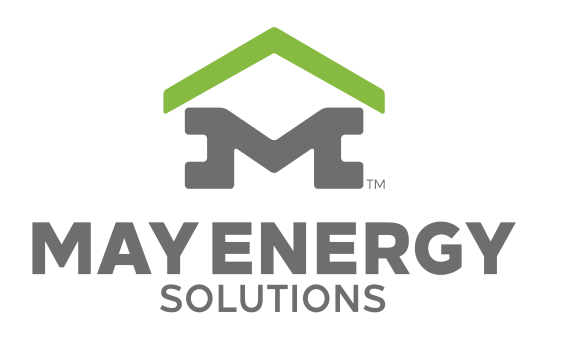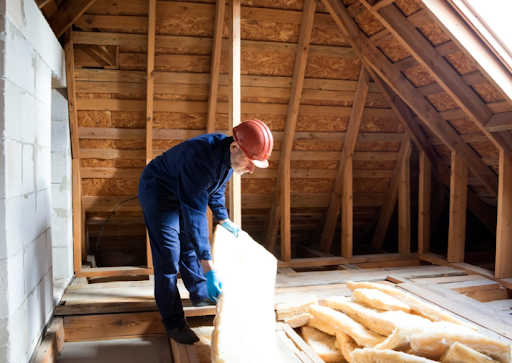When it comes to optimizing home energy performance, two core strategies often come into play: air sealing and insulation. Though frequently paired, they address different aspects of energy efficiency. Air sealing focuses on closing unintended gaps and cracks that allow uncontrolled airflow. Insulation, on the other hand, slows the transfer of heat through walls, ceilings, and floors, helping to maintain consistent indoor temperatures.
Many homeowners mistakenly prioritize one over the other, unaware that each plays a distinct yet complementary role. This blog breaks down their differences, explores how each contributes to comfort, HVAC efficiency, and energy savings, and helps you make informed, cost-effective choices tailored to your home’s unique needs.
Knowing Air Sealing & Insulation: An Overview
Before knowing the key distinctions between these two, let’s talk about them in brief first:-
- Air sealing is the process of closing gaps and cracks in your home’s envelope, such as around windows, doors, plumbing lines, and attic penetrations, to prevent unwanted airflow. It stops conditioned indoor air from escaping and unconditioned outdoor air from entering.
- Insulation, on the other hand, is material installed in walls, attics, and floors that slows heat transfer. It helps keep your home warm in winter and cool in summer by resisting the flow of heat through building materials.
Key Differences Between Air Sealing and Insulation
Primary Purpose and Mechanism
Air sealing and insulation both contribute to energy efficiency, but they serve different purposes:
Air Sealing controls the movement of air. It targets leaks that allow uncontrolled airflow, which can introduce moisture, dust, allergens, and pollutants into your living space. Without sealing these gaps, your HVAC system works harder to maintain consistent temperatures.
Insulation controls the movement of heat. It slows the transfer of thermal energy between inside and outside, helping your home stay warmer in winter and cooler in summer. However, it does little to stop air leakage unless paired with sealing.
How Performance Is Measured
Air Sealing effectiveness is evaluated using a blower door test. This diagnostic test pressurizes your home to measure air leakage, expressed as Air Changes per Hour at 50 Pascals (ACH50). A lower ACH50 value indicates a tighter building envelope. For example, homes built to Passive House standards aim for less than 0.6 ACH50, a sign of extremely tight construction.
Insulation is measured by its R-value, which represents its resistance to heat flow. The higher the R-value, the greater the insulating power. Required R-values depend on your local climate zone. For example, attics in colder areas may require insulation rated at R-38 or higher.
Different Materials and Applications
Air Sealing materials include caulk, spray foam, weatherstripping, and gaskets. These materials are applied in precise areas around window frames, electrical outlets, baseboards, rim joists, and attic access points to plug the specific holes where air can leak. A good home air sealing project pays close attention to these details, especially in older buildings.
Insulation materials cover larger areas and include fiberglass batts, blown-in cellulose, rigid foam boards, and spray foam insulation. Some types, such as closed-cell spray foam, can provide both insulation and air sealing when applied at the correct thickness, making them a versatile yet more expensive option.
Where They’re Installed
Air Sealing is often done in hidden or hard-to-reach areas, such as attic hatches, sill plates, rim joists, around pipes and wires, and behind knee walls. While these spots may seem minor, the cumulative impact of multiple small leaks can be significant, equivalent to leaving a window open all year round. It’s especially important to air seal the attic, where rising warm air commonly escapes.
Insulation, on the other hand, is installed across broad surfaces in walls, ceilings, attics, floors, basements, and crawl spaces. Its effectiveness depends on correct installation; gaps, compression, or improper alignment can severely reduce its R-value and performance.
Cost, Strategy, and Implementation Timing
Air Sealing tends to be more affordable and less invasive, especially in existing homes. It often serves as a first step toward improving energy efficiency. By stopping air leaks, it enhances the performance of your existing insulation and HVAC system. Many utility companies even offer rebates or incentives for professional air sealing.
Insulation, while more costly and labor-intensive, particularly in retrofits, provides substantial long-term benefits. It’s an essential step in new construction or major renovations and is best done after air sealing to maximize its effectiveness.
Final Words
Although air sealing and insulation serve different functions, they are most effective when used in conjunction with each other. Air sealing minimizes infiltration, while insulation manages thermal resistance. When properly implemented, they create a more controlled, comfortable, and energy-efficient home environment.
If you’re considering energy upgrades for your Texas home, blown-in insulation is an excellent choice. It provides full coverage, especially when paired with comprehensive home air sealing strategies. Start by searching for “blown-in insulation near me” and let May Energy Solutions deliver results that support long-term comfort, durability, and energy savings.

